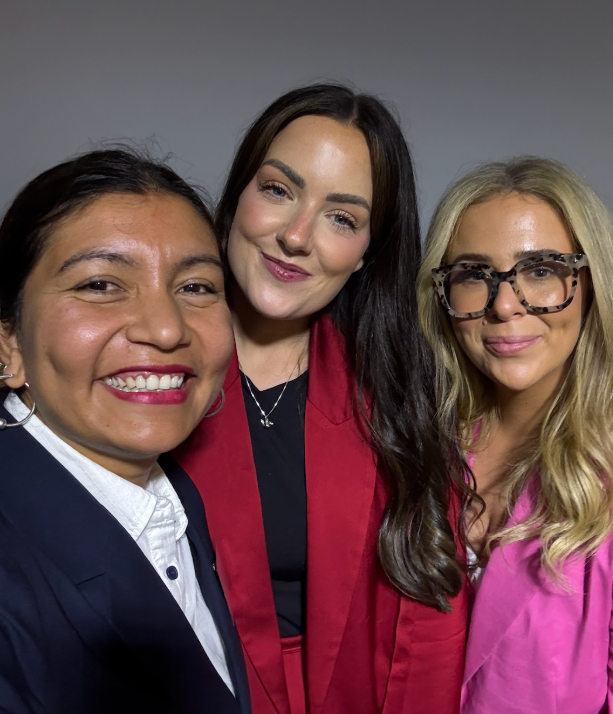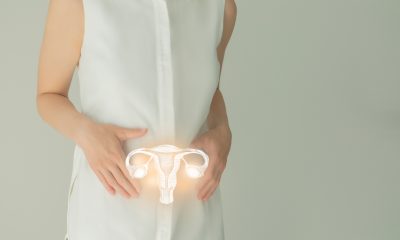Opinion
We are still decades away from truly egalitarian workplaces – here’s what STEM leaders can do
By Dr Anne Welsh, clinical psychologist, executive coach and consultant

STEM may have further to go, but there are simple changes companies can implement to start turning the tide.
Despite a cultural narrative of supporting women in science as they enter the field and grow their careers, women in STEM leadership dropped in 2021.
Overall, women make up a small percentage of the total workforce in STEM fields, and the pandemic furthered this gap, as women disproportionately left for caretaking roles.
As many as 40 per cent of women leave their STEM jobs after having a baby. However, as many as 24 per cent of child-free women also chose to leave the field.
There is marked attrition at other points of women’s lives as well, including perimenopause and menopause. Some employers write this off as a “woman” problem- blaming the desire for women to be at home with their children, caring for ageing parents, or taking on other roles.
Meanwhile, women themselves actually cite forms of gender discrimination and unsupportive work environments as the reasons for their departure.
Sadly, not only do employers lose out on these valuable colleagues, but they also short-change future scientists of mentors and role models down the road. These losses also have a financial impact.
It can cost as much as one and a half times the salary of a highly skilled worker to replace them, not to mention the lost knowledge, training/onboarding time, and impact on morale.
So what can companies do to increase their retention of women throughout the lifespan? To begin, they need to ask women.
According to a recent MetLife survey, which highlighted the problem of attrition of women in STEM, women asked for increased flexibility, career progression opportunities, meaningful organisational purpose, and creating an inclusive workplace.
Taken together, these suggest improving workplace culture in everything from fighting implicit bias (for example, assuming women in the 30-40 age range will want to have children and focus less on their careers) to ensuring that women’s contribution and potential are considered for promotion, just as they are for men.
But workplace culture change is not simply a matter of saying “we value women” and leaving it there. There must be concrete policy changes made to support women.
As mentioned, policies around work flexibility are important, as is ensuring that employees who use said policies are not unconsciously punished.
Throughout the pandemic years, we learned that work can be done remotely and honed the technology needed to do so.
Businesses, whether large or small, can offer flexibility around when and where work is done and around various models of part-time work. This allows employees to have a sense of autonomy and purpose in the work they do and see themselves as partnering with the organisation. These policies benefit men and women in having greater work-life integration.
It is also critical to have better leave options including parental leave for all parents – birthing or not – as this allows for better physical and mental health outcomes for parents and baby.
In ensuring these policies are open to men and women, regardless of birthing status, companies can also help set the stage for more egalitarian relationships and workplaces from day one. Businesses can also offer parental leave coaching through this time.
Parental leave coaching helps guide parents and their managers through preparing for leave, taking leave, and the return to work. It facilitates healthy communication and improves employee commitment and engagement.
Whether bringing in a coach as needed or using online platforms such as Lead your Leave through the Center for Parental Leave Leadership, employees can support parents and managers to make this transition a positive growing experience for all.
Relatedly, companies can broaden leave policies to include care-taking needs of all sorts, and health related leave for women throughout the lifespan.
As many saw recently, Spain passed menstruation related leave. Companies can adopt similar policies and extend it to leave around the menopause period as well, to include time away for doctor’s visits and addressing physical symptoms, as well as mental health concerns.
Workplaces should also be sure that their health care benefits cover related care, once again covering both the physical needs and mental health support. This can include access to medical and mental health support through apps like Maven or Balance to make needed care even more accessible.
Proactive and direct communication can also improve outcomes for all employees, including women. It can help them to feel supported and improve workplace culture.
To be concrete, this includes transparency around pay and a closed wage gap. It also means ongoing conversations around how the employee is feeling about work, as these conversations can help address problems before they become bigger.
Regular “stay” conversations around what will keep top talent happy can create positive working relationships and more engagement.
We are still decades away from truly egalitarian workplaces, and STEM may have further to go. That said, there are simple changes that companies can implement to start turning the tide.
STEM leaders need to talk to the women that work for them, listen to what they have to say and believe them when they say things are not equal. They need to provide them mentorship and coaching to help them grow their careers rather than letting them step away out of frustration.
Creating supportive workplaces allows for engaged and empowered employees who can continue to contribute their gifts throughout their working lives.
Dr Anne Welsh is a clinical psychologist, executive coach, and consultant. She began her career at Harvard before opening her own practice with a focus on supporting women in STEM and healthcare and working parents across career sectors. Find out more at drannewelsh.com.
News
Listening to pain: What eight women taught me about the state of women’s health in the UK

By Ruby Raut, founder & CEO, WUKA
It’s Ruby here, founder of WUKA and, like many of you, someone who’s been dismissed, doubted, and left waiting far too long when it comes to menstrual health.
Last week, I spoke at an event hosted by the Menstrual Health Project. It wasn’t just another panel or pitch session; it was a wake-up call.
The room was filled with GPs, pharmacists, educators, innovators, and women who have lived the daily reality of conditions like endometriosis, PCOS, PMDD, and premature ovarian insufficiency.
We weren’t there to celebrate solutions. We were there to listen. And what we heard broke us open.
The Stories Behind the Statistics
I walked out of that room with one page of notes — not data, not theory, but pain in ink.
The stories were raw and repetitive. Women told us of:
- 14 years of seeking help and getting none.
- 3 decades of living in pain.
- Being laughed at for wanting to come off contraception.
- Being told to “just go on the pill.”
- Waiting for a laparoscopy since 2015, and still waiting in 2025.
- Being asked to gain weight to get a period or lose weight to manage PCOS.
- Being offered pregnancy as a “solution.”
- Losing jobs because of endometriosis.
This is not an isolated list of frustrations. It’s a mirror reflecting the state of women’s health in the UK today.
Behind every statistic, there’s a woman who has rearranged her life around pain, missed promotions, cancelled plans, and lost trust in her own body.

The System Is Failing Us, and We Know It
Hearing these stories, I couldn’t help but think of it like a leaking roof.
You notice the drip, you report it, but you’re told it’s nothing serious, to just wait it out.
Days turn into months, months into years. By the time someone finally takes a proper look, the ceiling has collapsed.
That’s what living with an untreated women’s health condition feels like, small symptoms dismissed until they become impossible to ignore. That’s what our healthcare system is doing to women.
We don’t have a lack of data, we have a lack of listening.
When women describe pain, the system translates it into exaggeration. When they ask for options, they get the same recycled advice: “Go on the pill.”
The medical model still treats menstruation as a niche, not a vital sign.
And that’s why listening matters. Because until we treat lived experience as evidence, we’ll keep designing systems that ignore reality.
Learning from Lived Experience
As founders, practitioners, and advocates, we often talk about innovation, new tech, better diagnostics, smarter apps. But innovation without empathy is just noise.
Listening to eight women share their stories of endometriosis, PCOS, and PMDD reminded me of something fundamental: we can’t fix what we refuse to feel.
It takes courage to speak about periods, pain, infertility, and loss in a room full of professionals.
Yet these women did, not because they wanted sympathy, but because they wanted change.
Their words carried a collective message: “We don’t need to be fixed, we need to be heard.”
The Change We Need
So, what would change actually look like?
- Menstrual health education in medical schools.
Not as a module, but as a mainstream subject. Every GP, nurse, and specialist should understand menstrual health the way they understand blood pressure. - Inclusive menopause and menstrual support, for all ages, all bodies.
Menstrual and menopausal health should not be separate conversations. Hormonal health spans a lifetime. - Accessible care at every level.
Support should start at the local pharmacy, not five years into a diagnosis journey. Pharmacists and primary care teams can be the first line of empathy and intervention. - Private and public health insurance that covers menstrual conditions.
No woman should have to choose between financial stability and pain management. - Policy change that protects and respects women’s health.
We need national recognition that menstrual health is not a luxury — it’s a basic human right.
What Listening Really Means
Listening is not passive. It’s radical.
It means staying in the discomfort of someone else’s pain long enough to see the system that caused it. It means asking, not assuming. It means holding space before we offer solutions.
The Menstrual Health Project event reminded me that we can’t rely on numbers alone. Data gives us proof. Stories give us purpose. And when you combine both, that’s when transformation begins.

Why WUKA Cares
At WUKA, we started with period underwear, but what we’re really building is period equity.
Every conversation, campaign, and product we create is rooted in one belief: women deserve better.
Better care. Better education. Better respect.
Because menstrual health is not a side issue. It’s a social justice issue. It’s about the right to live without shame, without silence, and without suffering that’s dismissed as “normal.”
If you’re someone living with any of this, endometriosis, PCOS, PMDD, or anything that makes you feel unseen, I see you. You are not alone. You deserve better, and we will keep fighting for you.
Let’s listen louder. Let’s care deeper. Let’s make menstrual health mainstream.
With you always,
Ruby x
Founder & CEO, WUKA
P.S. Check out the incredible work of the Menstrual Health Project. They’re not just raising awareness, they’re rebuilding the narrative.
Pregnancy
Why gestational diabetes underdiagnosis is a women’s health crisis

By James Jackson, CEO at Digostics
Gestational diabetes (GDM) is one of the most under-recognised challenges in maternity care today.
Despite affecting around one in five pregnancies in the UK, GDM remains a blind spot in policy and practice, with devastating consequences for women and their children.
New research continues to expose the scale of the problem.
A recent NIHR-funded study published in Diabetic Medicine found that standard NHS testing methods miss over 50 per cent of cases.
Put simply: thousands of women each year go undiagnosed, untreated, and exposed to avoidable risks.
For a condition we know how to diagnose and manage, this represents a serious failure in women’s healthcare.
The human cost of missed diagnosis
When gestational diabetes is not picked up, the consequences are immediate and long-term.
During pregnancy, women face higher risks of preeclampsia, larger babies, emergency C-sections, and stillbirth. Babies are more likely to need neonatal intensive care due to breathing difficulties or low blood sugar.
The risks don’t end at birth.
Mothers who have had GDM are up to 50 per cent more likely to develop type 2 diabetes within 5–10 years. Their children also face an increased lifetime risk of obesity and diabetes.
These outcomes are not rare, nor are they inevitable. They are the product of a testing system that is not fit for purpose.
An unequal system
Current UK pathways rely on risk-factor–based screening rather than universal testing.

James Jackson
This already puts women at a disadvantage compared with countries such as Spain, Italy, and many others, where all pregnant women are routinely screened.
But even within this narrower approach, the NHS faces a further problem: in-clinic oral glucose tolerance tests (OGTTs), used to test for GDM, are prone to delays in blood sample processing, leading to false negatives.
Research shows that when samples are processed correctly diagnoses increase from 9 per cent to 22 per cent — more than double.
The burden of this diagnostic failure falls hardest on women from disadvantaged backgrounds.
Attending early-morning, hospital-based tests is more difficult for women juggling shift work, childcare, or long travel times.
Women from ethnic minority groups, who already face higher rates of maternal complications, are also more likely to be missed. In this way, testing failures are not just a clinical problem but a driver of health inequalities.
The case for innovation
This is where innovation can play a transformative role.
We have seen in other areas of healthcare — from remote monitoring to home blood pressure checks — how new approaches can increase accuracy, improve access, and reduce inequalities.
Gestational diabetes testing should be no different. Technologies such as at-home oral glucose tolerance tests (OGTTs) are designed to meet the same clinical standards as hospital testing, while overcoming the practical barriers of travel, fasting, and sample degradation.
By enabling women to test from home, results can be processed immediately and shared directly with care teams, reducing missed cases and ensuring timely diagnosis.
Early work with NHS Trusts has already shown that this model not only identifies more cases but also improves access for diverse patient groups, including those typically underserved.
From evidence to action
Despite clear data, progress has been slow. Part of the challenge is that more accurate testing uncovers more cases — and more cases mean more workload for already stretched maternity services.
But failing to diagnose does not make the problem go away; it only delays care and worsens outcomes.
In the long run, undiagnosed gestational diabetes costs the NHS more through emergency interventions, neonatal intensive care, later-life type 2 diabetes, and the ongoing workload and cost pressures this creates for primary care.
The evidence is clear. Now it must translate into policy. That means:
- Recognising underdiagnosis as a patient safety issue on par with other maternity scandals.
- Guaranteeing that all women offered testing receive accurate, reliable results, rather than being failed by flawed processes.
- Supporting innovation that improves accuracy and equity, whether in the clinic or at home.
- Embedding the patient voice in service design, especially from women in disadvantaged and minority communities most affected by current failures.
A call to prioritise women’s health
Gestational diabetes is not a niche concern; it is a mainstream women’s health issue with lifelong consequences.
Every undiagnosed case represents not just a missed number, but a mother at risk of preeclampsia or birth trauma, a baby at risk of intensive care, or a family facing preventable illness later in life.
As maternity services undergo yet another review, it is striking that the diagnostic gap in GDM remains so little discussed.
We cannot claim to be serious about women’s health while ignoring one of the most widespread and preventable sources of harm in pregnancy.
Innovation has a role to play — but innovation must be matched by policy will.
If we are to modernise maternity care, we must start by ensuring that every woman has access to accurate, timely, and equitable testing for gestational diabetes.
Because every mother deserves certainty. And every baby deserves the best start in life.
Opinion
Understanding inflammaging and how preventative health data could help lessen its impact

By Dominique Kent, CEO, Bluecrest
As women, we spend much of our lives juggling, I know this from my own experience.
Running a business, raising a family, caring for parents as they get older, the list is endless. Somewhere in the mix, our own health slips down the priority list.
That is why the idea of inflammaging resonates so strongly with me.
It is a quiet, creeping process in the body: low-level inflammation that builds up over time and accelerates ageing.
Unlike a sprained ankle or a winter flu, you cannot feel it happening.
Yet it’s there, silently increasing the risk of conditions that affect so many women in later life such as heart disease, osteoporosis and dementia.
My background before Bluecrest was in the care sector where I saw first-hand what happens when people live longer but not necessarily well.
Too many spent their final years dealing with pain, frailty and loss of independence.
It shaped my belief that the goal for us all should not just be about lifespan but healthspan: the years we live in good health, able to do the things we enjoy and remain independent.
Inflammaging is a direct and silent threat to this, so it’s something that needs to be addressed.
We as women face some particular challenges here. Hormonal changes during menopause remove a natural buffer against inflammation. Autoimmune conditions, which are often inflammatory, are far more common in women.
There are pressures outside of our biologies too, which often fall more heavily on women: stress, trauma, poor sleep, carrying the invisible load of family responsibilities.
All of these add to the inflammatory burden.
The danger is that inflammaging is invisible, you don’t wake up one day and feel it.
Instead it builds, and its impact often only shows when something serious has developed. This is what makes it so risky.
We already know that women’s health issues are often picked up late, misdiagnosed or brushed aside. Add a hidden process like inflammaging into the mix and you see why prevention is so important.
That focus on prevention is what drew me to Bluecrest.

Dominique Kent
The NHS has made prevention a key part of its long-term plan, and rightly so. If we can spot risks earlier, through small and regular interventions, we can act earlier. That is good for individuals and for the health system.
Inflammaging links directly to so many of the chronic conditions that we see in the headlines, the ones that put the heaviest strain on the NHS, so tackling it at source makes sense.
At Bluecrest, I see how empowering it can be when women come for a health check.
Often it is the first time in years they have put themselves at the top of the list, rather than convincing their husbands or parents to get checked out.
The results are not always perfect, but even when they show areas of concern, women tell me they feel in control.
They leave with a plan, and with knowledge which can be a huge turning point.
I also think about this in the context of business.
Midlife is often when women are at the peak of their careers, yet it is also when health issues start to appear. If hidden risks like inflammaging go unaddressed, we lose women from the workforce at a time when their skills and leadership are most needed.
For me, that’s why prevention is not just a personal issue, it is an economic one.
The good news is that there are things we can do.
A balanced diet, regular exercise, proper sleep and managing stress all help reduce inflammation. Stopping smoking and cutting back on alcohol make a difference too.
But it is unrealistic to leave it all to the individual – and we’ll fail if we add this to an already never-ending list of responsibilities that women take on.
This is where femtech has such a vital role to play.
For too long, women have lacked access to the kind of information that would allow them to make confident and informed health decisions. Now we are seeing new technologies emerge that can change that.
From wearable devices that track sleep and stress, to apps that monitor cycle changes, to biomarker tests that give an early picture of cardiovascular or metabolic risk, women can increasingly access the data they need to understand their own bodies and act sooner.
At Bluecrest, we see how powerful it is when women are given personalised health information alongside the expertise and support to understand it. It shifts prevention from being a vague idea into something tangible.
When data is made accessible, women are more likely to act, whether that is adjusting lifestyle choices, speaking to a GP, or booking follow-up tests.
For femtech to really deliver, though, it has to be part of a bigger ecosystem.
Women need healthcare services that take their concerns seriously, workplaces that respect their health needs, and innovations that are affordable and fit in with their lives.
You’re not going to go and get your inflammation levels checked if you have to take a day off work or caring responsibilities and travel 50 miles to get there.
Data is only empowering when it is clear, trusted and connected to practical next steps.
That is the opportunity now: to combine the science of inflammaging with the growing power of technology, so that women can extend not only lifespan but healthspan, with more years lived in good health and independence.
As a female CEO, I feel a responsibility to use my voice on issues like this.
Women’s health has too often been overlooked, underfunded and under-researched.
Inflammaging may be silent, but it does not have to remain invisible.
By naming it, understanding it, and taking action early, we can give women more years of healthy, independent life.

 Hormonal health20 hours ago
Hormonal health20 hours agoDozens of women report suffering painful burns after using Always sanitary towels

 News2 weeks ago
News2 weeks agoFDA plans to revise black box warning on menopause hormone therapies

 News2 weeks ago
News2 weeks agoAI-powered women’s health companion Nexus launches in UK

 News2 weeks ago
News2 weeks agoScientists turn human skin cells into eggs in IVF breakthrough

 News7 days ago
News7 days agoWomen’s health innovations recognised in TIME’s Best Inventions 2025

 Hormonal health2 weeks ago
Hormonal health2 weeks agoDaily pill could delay menopause ‘by years,’ study finds

 News2 weeks ago
News2 weeks agoAncient herb to modern must-have: Why ashwagandha is capturing UK women’s attention

 Menopause3 weeks ago
Menopause3 weeks agoNew report exposes perimenopause as biggest blind spot in women’s health




























